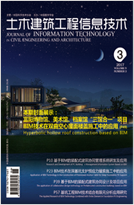Abstract:
Traditional design approaches, characterized by "linear flow" and "professional independence, " often lead to issues such as errors, omissions, cost overruns, and inefficiencies. To enhance design quality and strengthen cost and schedule control, this paper introduces the theory of business process reengineering to establish a BIM forward collaborative design process that emphasizes a "process system" and "professional parallelism." The study analyzes the efficiency and duration of BIM forward collaborative design, as well as the organizational structure of personnel. Key technical points are presented, including standardized design, parametric component design, professional collaborative design, BIM engineering calculations, drawing and delivery, and the implementation of BIM + QR code applications. The forward transmission of design data, driven by models, aims to improve data accuracy and effectiveness, achieving integrated collaborative design and lightweight digital delivery in construction engineering.










 下载:
下载: